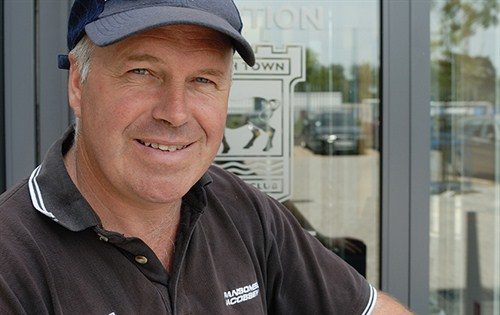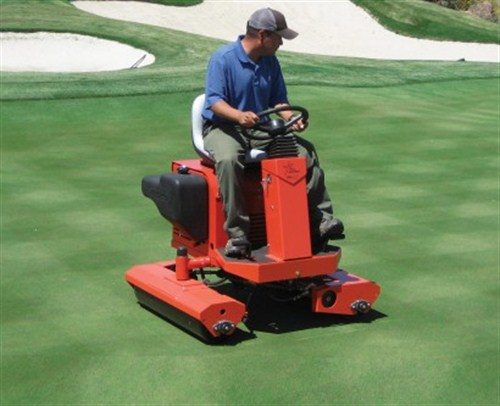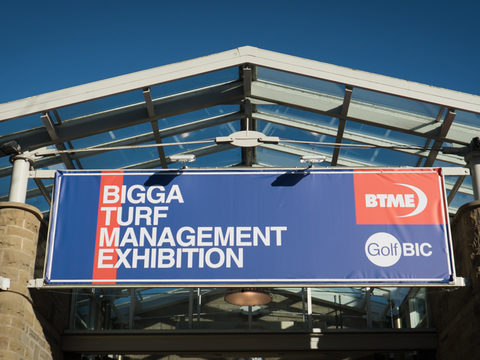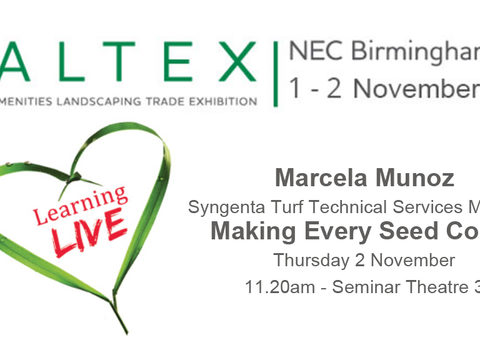PITCH QUALITY ON A ROLL

Football pitch and sports turf managers could look at some of the techniques used by greenkeepers to further enhance the quality and cut the cost of maintenance, according to Alan Ferguson, Head Groundman at the FA's flagship facility, St George's Park.
Speaking at PitchFocus 2013, Alan reported one of the latest innovations has been a trial to alternate mowing with a turf iron roller, compared to the conventional daily cut. The intention had been to create a more consistent playing surface and greater ball speed off the top, but he had also identified improvements in turf health and valuable time savings.

Alan (above) reported that rolling with the Smithco Tournament Ultra roller took half the time of cutting with a pedestrian mower, which has released time to undertake other essential pitch maintenance operations. That has helped to keep the site in pristine condition demanded by the busy schedule of the site's users - which has seen pitch use rise to nearly 90% of capacity.
He believed that, used in combination with Primo Maxx, rolling had alleviated stress on turf plants, which had led to better surface density, greater wear tolerance and faster recovery after intense training sessions. The Primo Maxx programme is used at a rate of 0.8 l/ha from mid-April until turf growth slows in the autumn.
"I've always seen Primo Maxx as instrumental in increasing root density, enhancing plant health, improving shade tolerance and aiding the overall management of pitches," he said. "Used in conjunction with alternating rolling and mowing, it fully utilises the potential to produce more consistent surfaces all season and further increases the proven time savings."
Alan highlighted one advantage of the turf iron (below) is that it maintains a more uniform pressure across the surface, compared to a conventional tractor trailed roller. "We have seen instances of extremely heavy rollers being used on sports pitches, which could be counterproductive to soil structure and plant health. For those using trailed rollers, 375 to 400 kg would appear to be the optimum," he advised.

He reported that the research has shown fibre-sand constructed pitches are more susceptible to compaction, but can be adequately managed within the aeration programme; Desso-type pitches appear less affected by compaction. However, he warns that managers of natural soil-based pitches need to be wary of smearing when rolling, especially if the soil has a high clay content or in wet conditions.
"We are now looking to integrate turf iron rolling within the overall management regime," he added. "That is likely to include rolling after most sessions across the site in the future."
Click here to read more on Primo Maxx use on winter sports pitches: Spotlight on winter Primo use


